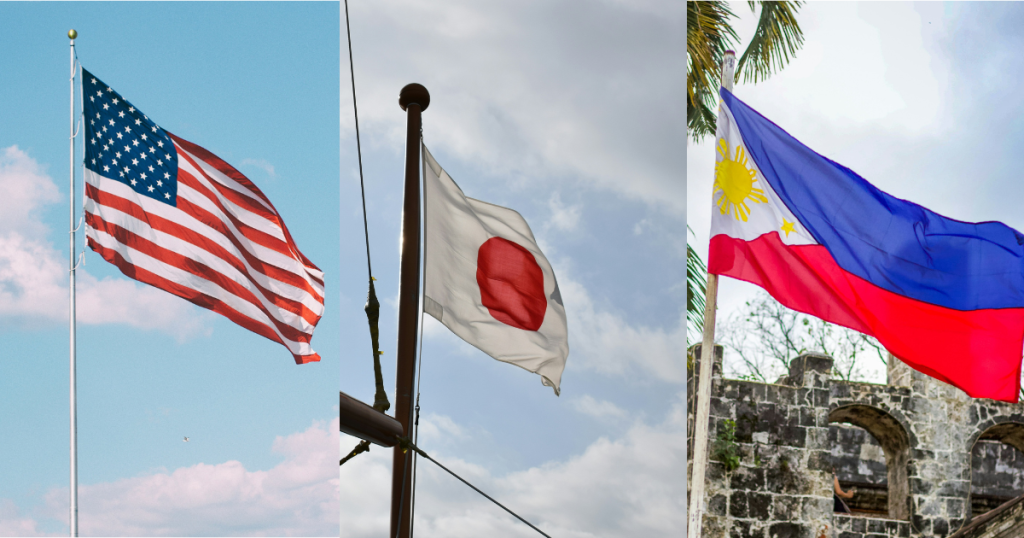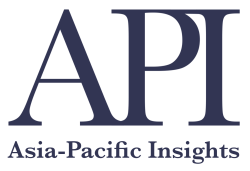US forms triangle with treaty allies Japan and Philippines to fend off invoking MDT’s Article V

By Rodney Jaleco | Date 04-06-2024
WASHINGTON, D.C. — The treaty that binds the Philippines and the United States to each other’s defense is something the Philippine ambassador to Washington said the government wished “will never have to be invoked,” but the top US military commander in the Indo-Pacific region warned China might be pushing them to do precisely that.
“The Mutual Defense Treaty is something we hope will never have to be invoked, but if in the event any situation calls for our treaty ally like the United States, we will not hesitate to do so,” Ambassador Jose Manuel Romualdez told reporters in a video briefing for the upcoming trilateral leaders’ summit among the US, Philippines, and Japan next week, April 11.
US President Joe Biden, his Filipino counterpart, Ferdinand Marcos Jr., and Japanese Prime Minister Fumio Kishida would hold an inaugural summit, a historic three-legged alliance at the White House that many see as a response to mounting threats from China.
Romualdez was referring to two key provisions of the 1951 US-PH Mutual Defense Treaty – Article IV, which states an attack on either party will be considered an attack on both, and Article V, which defines the meaning and scope of an attack to include not only each other’s population centers but also public vessels and aircraft as well as the coast guard.
The previous administration under Donald Trump was the first to state clearly that the MDT can be invoked if there was an attack anywhere in the Pacific and the South China Sea, abandoning its ambiguous policy that limits only the scope within the country’s metropolitan area.
In testimony before a House panel last month, US Admiral John Aquilino, commander-in-chief of the US Indo-Pacific Command USINDOPACOM), said the Philippines was in a “really critical hot spot” because of Chinese naval aggression in disputed areas of the West Philippine Sea and the country’s Exclusive Economic Zone, including the use of water cannons on a resupply boat bound for the BRP Sierra Madre in the Ayungin (2nd Thomas) Shoal that injured several Filipino crew.
“I would hope that the international community’s condemnation of those actions is enough to get the Chinese to back off. But if it doesn’t, it could go in a bad place,” he warned. “So I’m concerned about where it can go.”
That is reportedly one of the concerns raised in staff-level meetings with Filipino officials in Washington.
Although the MDT does not identify how the US would respond if the Philippines were attacked, Biden is expected to reiterate America’s “ironclad” commitment to come to the Philippines’ aid. That assurance appears to have satisfied Manila so far.
Recent confrontations between the Philippines and China in the Ayungin, also known as the Second Thomas Shoal and Panatag or Scarborough Shoal, focus concerns over China’s “gray zone tactics,” which fall just short of the threshold of the MDT’s armed attack requisite.
China has relied increasingly on such ploys after the 2016 arbitral ruling dismissed China’s sweeping “nine-dash-line” argument laying claim on most of the South China Sea, often intruding on the maritime borders of the Philippines, Vietnam, and other Southeast Asian neighbors.
“China calls these actions ‘maritime rights protection’ or ‘peaceful use of military forces.’
Regardless of the terminology used, it is clear that these offensive maneuvers are a disguise for China’s expansionary campaign to control all of the West Philippine Sea,” wrote Charmaine Misalucha-Willoughby in an article for the DC-based Institute of Peace.
Japan, too, has suffered from China’s ambiguous predations, so the coming trilateral setup seems to be only a matter of time.
“The summit aims to advance the trilateral partnership to promote inclusive economic growth and emerging technologies, further peace and security in our region and worldwide,” Romualdez explained.
“The expected topics will range from defense and security cooperation as well as address the emerging and traditional security threats in our maritime domain to economic and technological cooperation, ensuring supply resilience particularly in the semiconductor industry, critical infrastructure development, digital transformation and investing in clean energy,” the Philippine envoy added, citing the recent visit to Manila of US Commerce Secretary Gina Raimondo.
Raimondo led a delegation of senior executives from 22 US businesses and non-profits in a visit to Manila last March 11 and announced $1 billion worth of recently completed or anticipated US investments expected to double the 13 semi-conductor factories in the Philippines.
Japan and the Philippines are also finalizing a Reciprocal Access Agreement (RAA) – akin to the Visiting Forces Agreement (VFA) with the US – that provides the legal framework for the deployment of Japan Self-Defense Forces (JSDF) troops and equipment in the Philippines, including plans to conduct joint maritime patrols later this year.
Australia will reportedly join the three partners.
Biden and Marcos will also hold a separate bilateral meeting on April 11: Marcos Jr. and Defense Secretary Gilberto Teodoro will have a separate meeting with US Defense Secretary Lloyd Austin at the Pentagon.
Romualdez failed to mention a possible bilateral with PM Kishida in his briefing.
